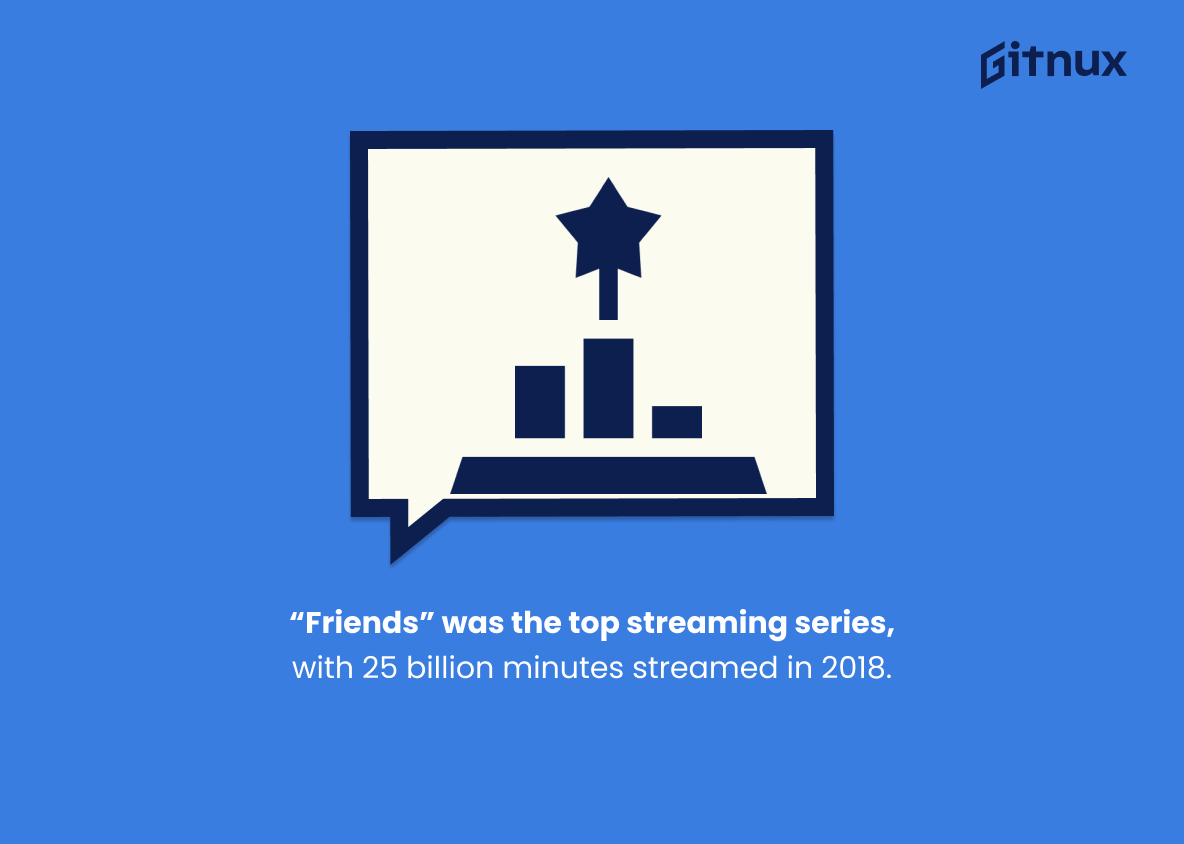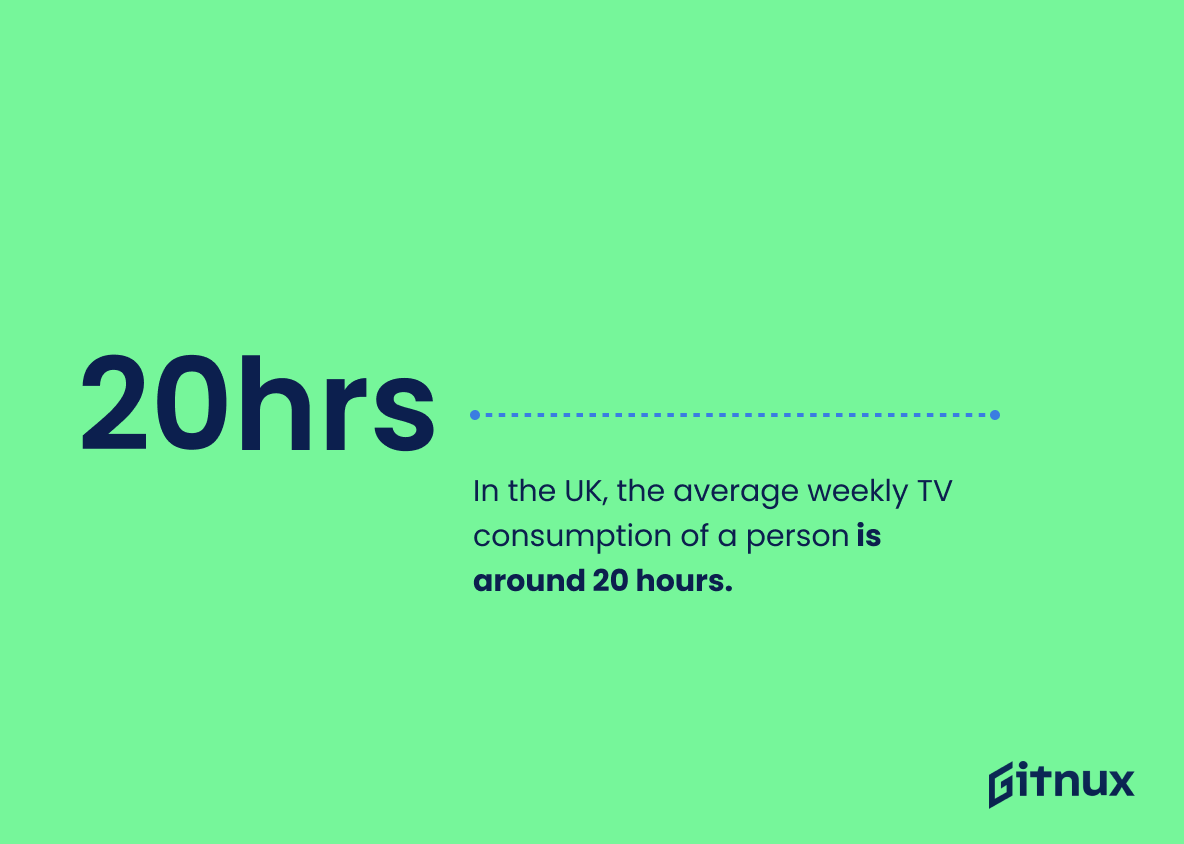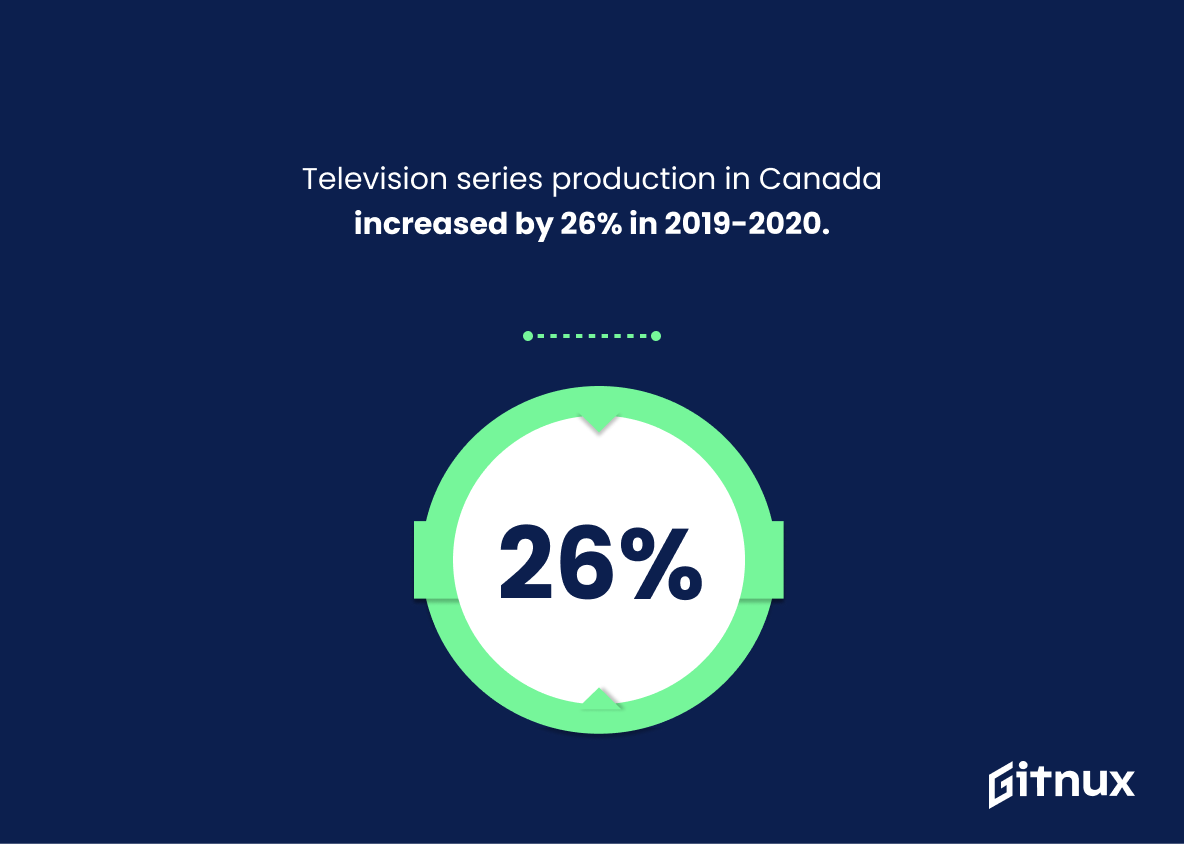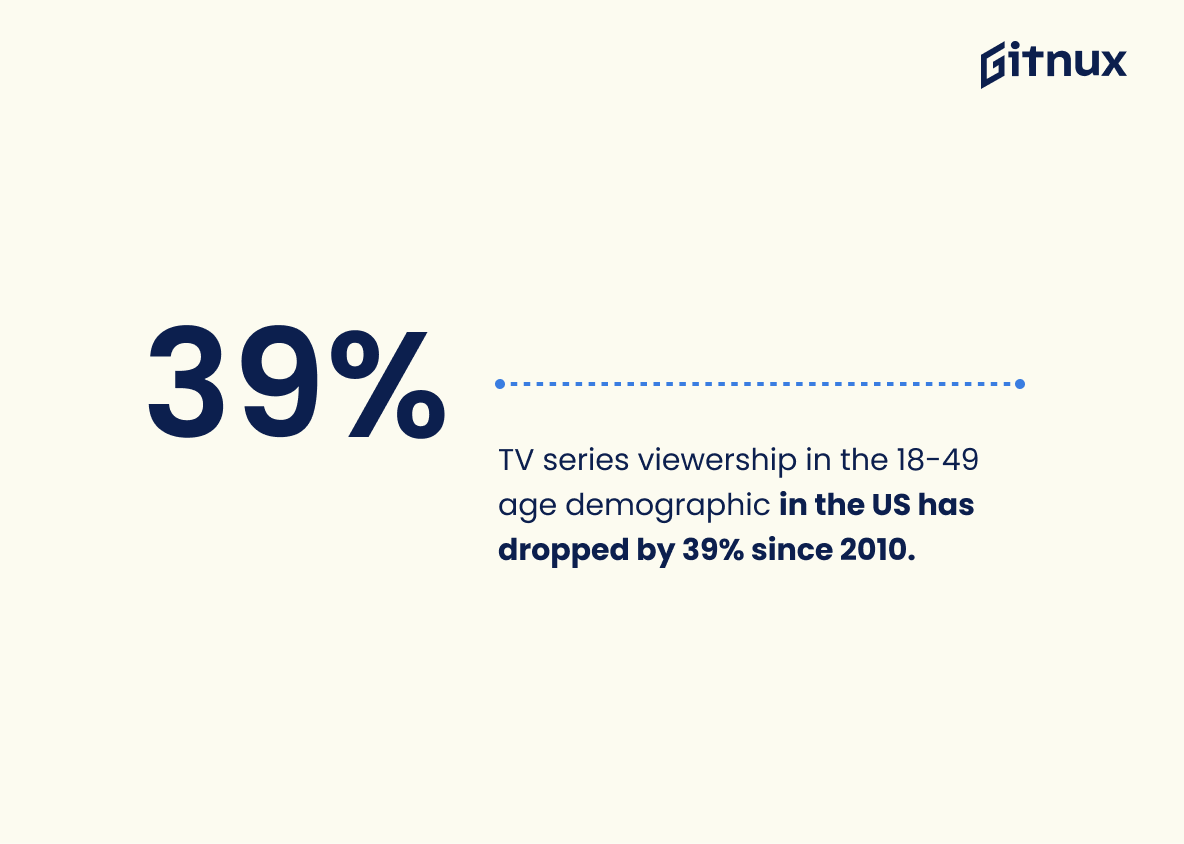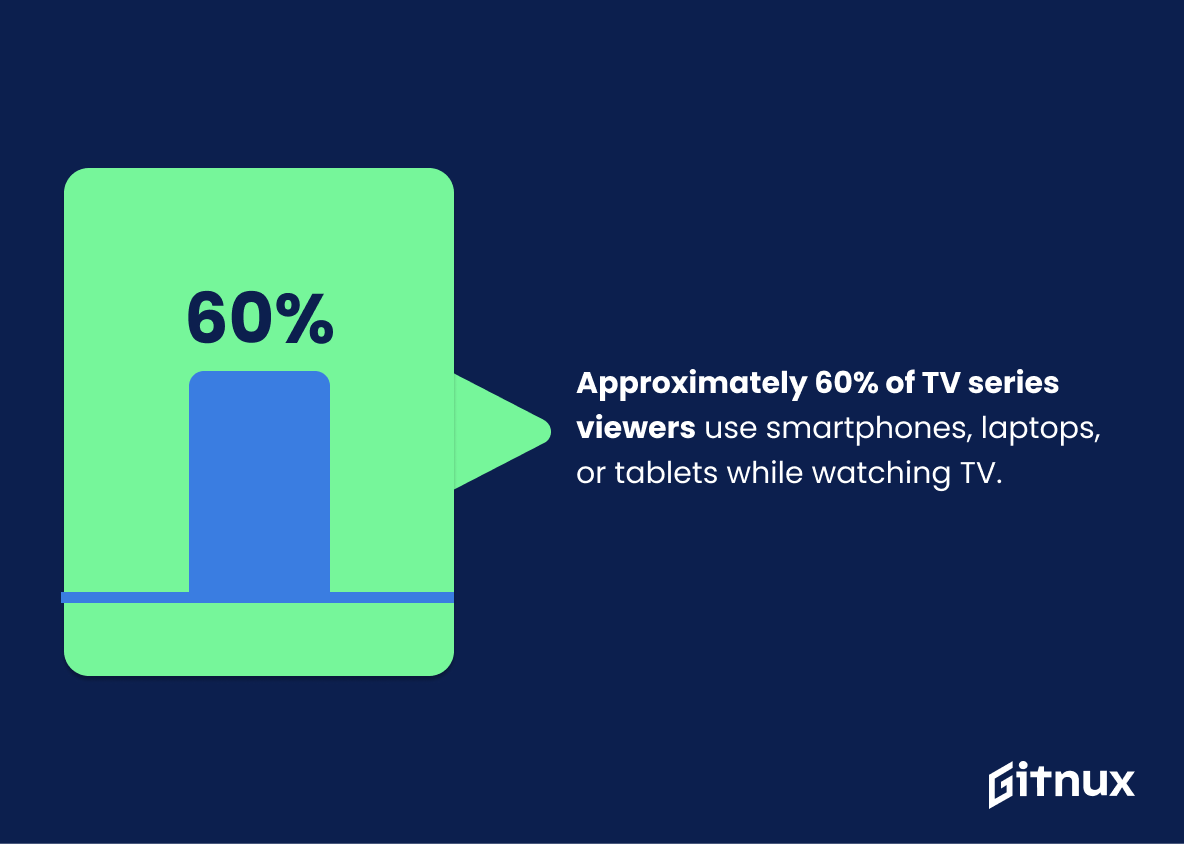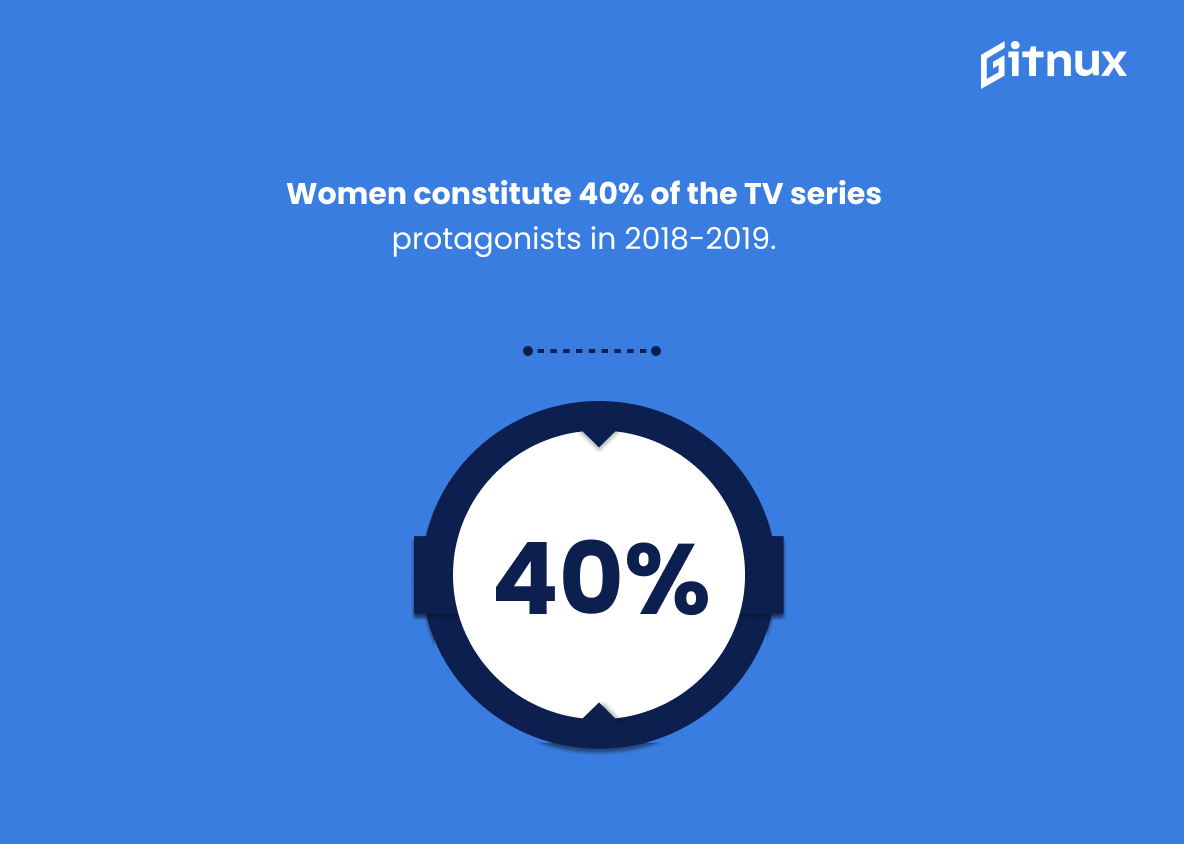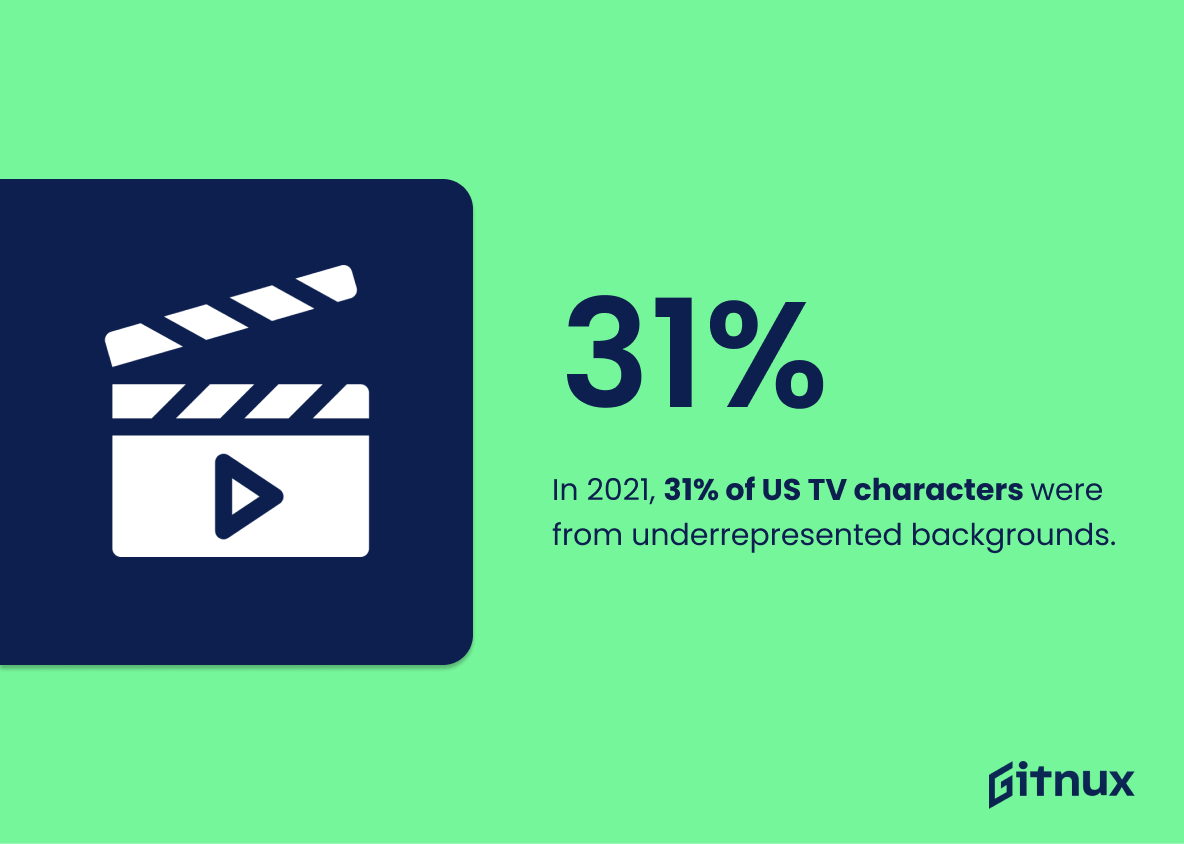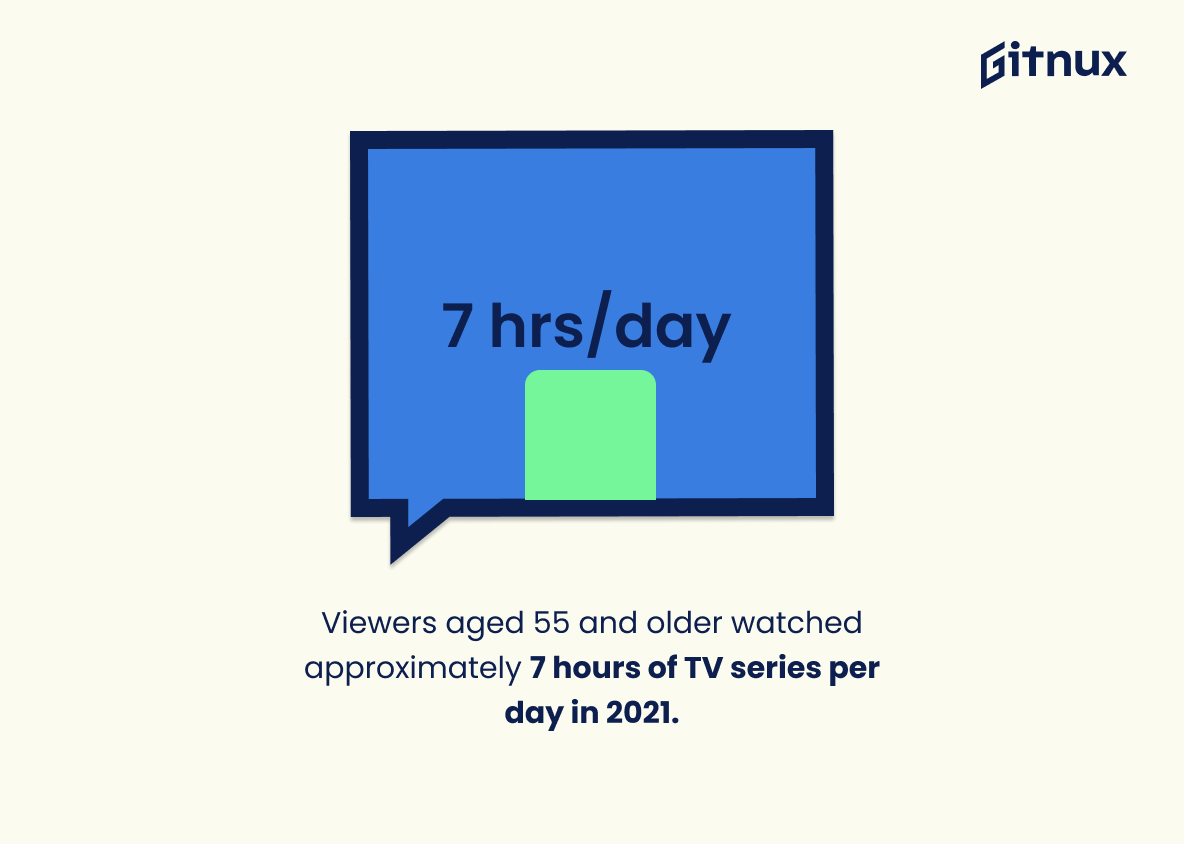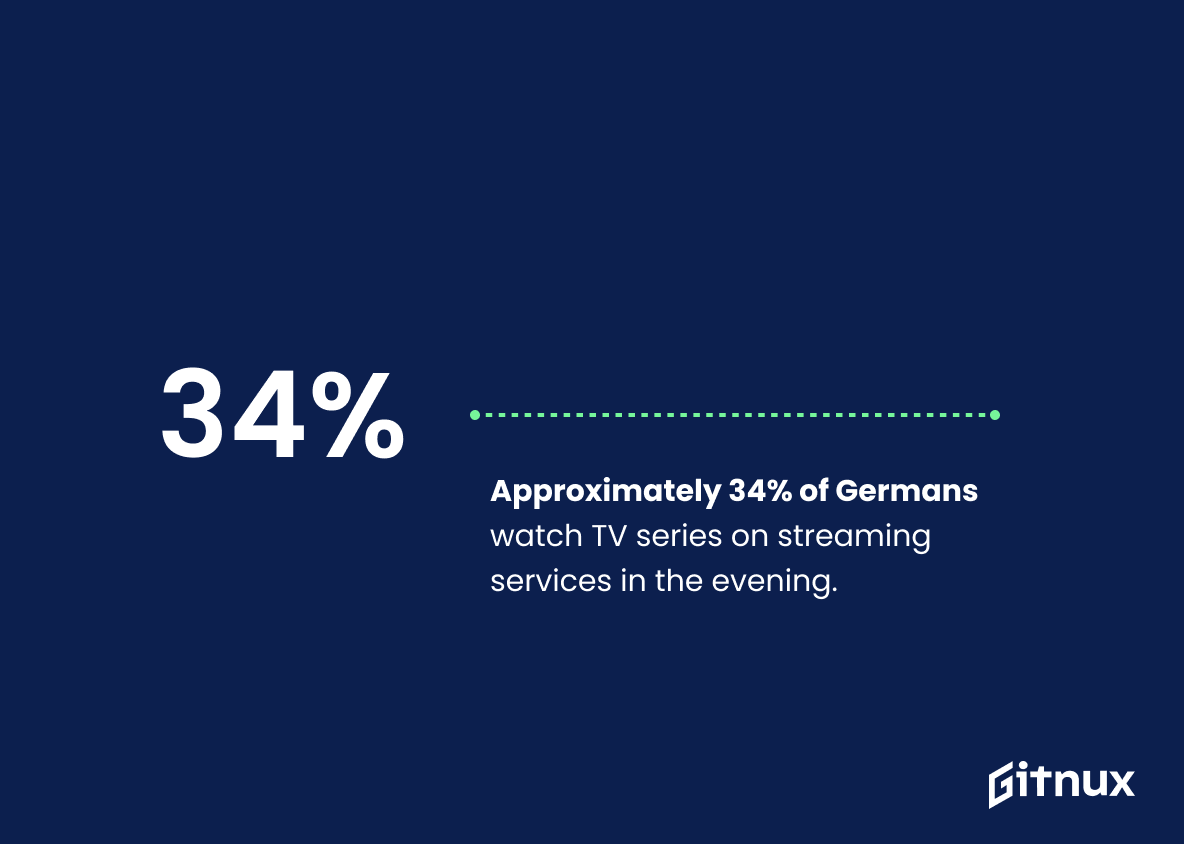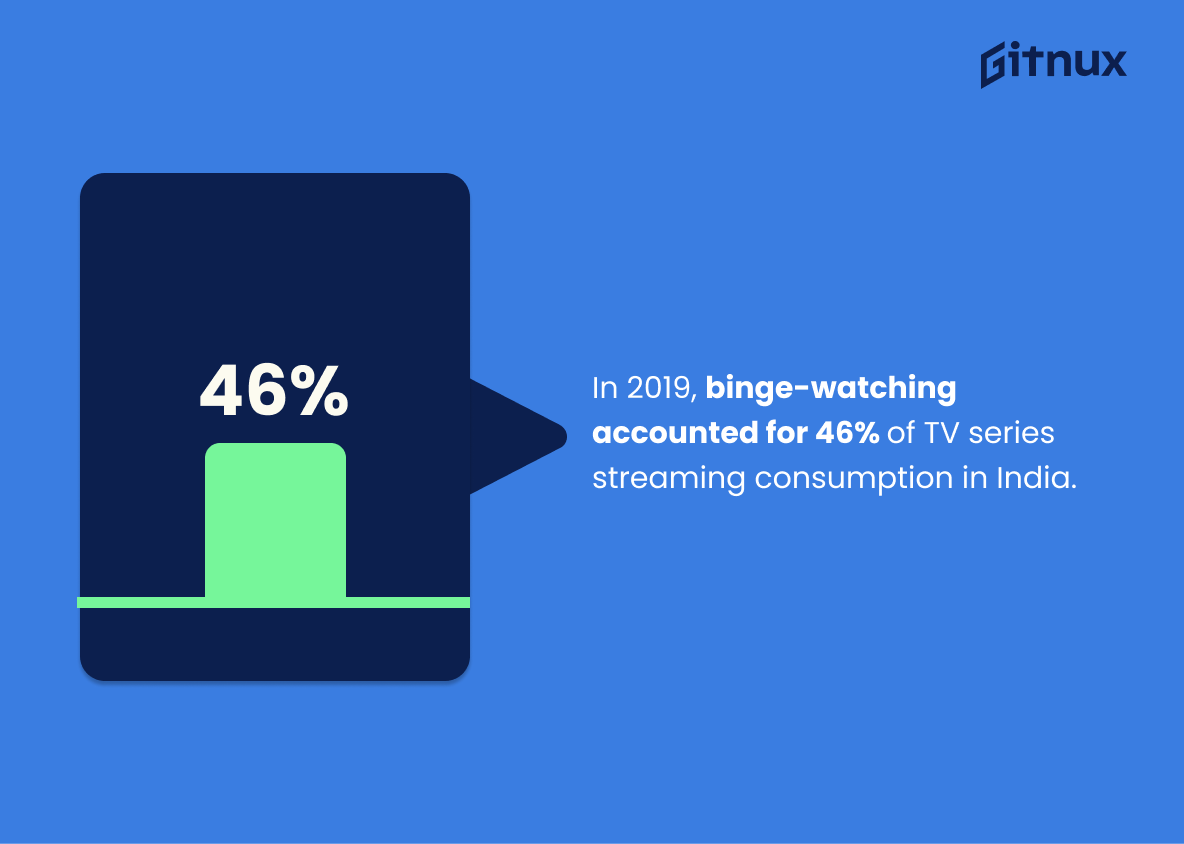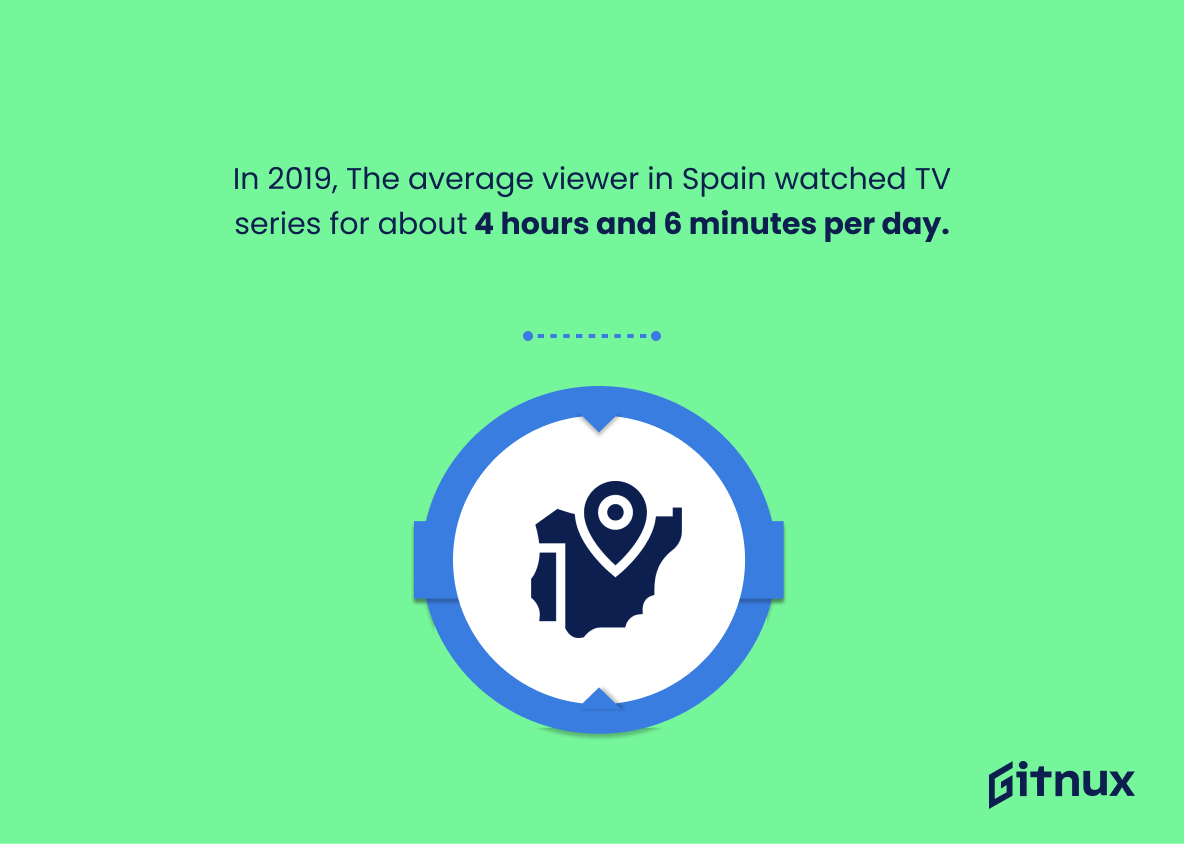Are you a fan of TV series? If so, then you’re in luck. This blog post will explore the fascinating world of television series statistics. We’ll look at how many original scripted TV series were produced in 2019, the average amount of time Americans spend watching them each week, and what percentage are likely to be streaming rather than traditional broadcasts.
Additionally, we’ll examine which show is most popular on streaming platforms and delve into international viewership trends as well as production numbers from Canada and Australia. Finally, we’ll discuss Emmy nominations for Netflix shows and take a closer look at who’s watching these programs – including age demographics across different countries – plus how they watch it (live or delayed). So let’s dive right in.
TV Series Statistics Overview
Approximately 56% of US adults are likely to be streaming TV series rather than traditional television broadcasts.
This statistic is a telling indication of the changing landscape of television consumption. It shows that more and more people are turning to streaming services to watch their favorite shows, rather than relying on traditional television broadcasts. This shift in viewing habits has implications for the television industry, as streaming services become increasingly popular and more widely available. As such, this statistic is an important piece of information for anyone interested in the current state of television and its future prospects.
“Friends” is the most popular TV series on streaming platforms, with an estimated 25 billion minutes streamed in 2018.
This statistic is a testament to the immense popularity of “Friends” on streaming platforms, with an estimated 25 billion minutes streamed in 2018. It speaks to the show’s enduring appeal and its ability to captivate viewers across generations. This statistic is a powerful reminder of the show’s cultural impact and its ability to remain relevant in today’s streaming landscape.
In the UK, the average weekly TV consumption of a person is around 20 hours.
This statistic is a telling indication of the immense popularity of TV series in the UK. It shows that people in the UK are devoting a significant portion of their week to watching TV series, which speaks to the power of the medium and its ability to captivate audiences. This statistic is an important piece of information to consider when discussing TV series statistics, as it provides insight into the viewing habits of the UK population.
Approximately 25% of TV series viewers are watching international content in 2021.
This statistic is indicative of the growing trend of international content consumption among TV series viewers. It shows that viewers are increasingly interested in content from other countries, which could be due to the increasing availability of international content on streaming services. This could be a great opportunity for content creators to reach a wider audience and expand their reach beyond their own country. Additionally, this statistic could be used to inform marketing strategies for TV series, as it shows that international content is becoming increasingly popular.
Television series production in Canada increased by 26% in 2019-2020.
This statistic is a testament to the growing popularity of Canadian television series. It shows that more and more people are tuning in to watch Canadian-made shows, which is a great sign for the industry. It also indicates that the Canadian television industry is thriving and that it is producing quality content that viewers are enjoying. This is an important statistic to consider when discussing the success of the Canadian television industry.
In the US, about 50% of people watch TV series events live or within 3 days of airing.
This statistic is a testament to the power of TV series events in the US. It shows that despite the availability of streaming services, people still prefer to watch these events live or within a few days of airing. This indicates that TV series events are still a major source of entertainment for many people in the US.
Netflix was the top streaming service in terms of the number of Emmy nominations in 2021, with 129 TV series nominations.
This statistic is a testament to Netflix’s success in the TV series industry, highlighting the streaming service’s impressive achievement of 129 Emmy nominations in 2021. It is a clear indication of the company’s ability to produce quality content that resonates with viewers and critics alike. This statistic is an important one to consider when discussing TV series statistics, as it demonstrates the power of Netflix’s programming and its impact on the industry.
TV series viewership in the 18-49 age demographic in the US has dropped by 39% since 2010.
This statistic is a telling indication of the changing landscape of television viewership in the US. It highlights the fact that the 18-49 age demographic is no longer the primary target audience for TV series, and that other age groups are increasingly becoming more important. This is an important factor to consider when discussing TV series statistics, as it can help to inform decisions about which age groups to target when creating and marketing new series.
Approximately 60% of TV series viewers use smartphones, laptops, or tablets while watching TV.
This statistic is a telling indication of how technology has changed the way we watch TV. It shows that the majority of TV series viewers are now using multiple devices while watching, which has implications for how content is consumed and how TV series are marketed. This statistic is important for understanding the current landscape of TV series viewership and how it has been impacted by the rise of technology.
Women constitute 40% of the TV series protagonists in 2018-2019.
This statistic is a powerful indicator of the progress being made in the representation of women in television. It shows that women are no longer being relegated to the sidelines, but are instead being given the opportunity to take center stage in the stories being told. This is an important step forward in creating a more equitable and inclusive media landscape.
In 2021, approximately 31% of scripted TV series characters in the US were members of an underrepresented racial/ethnic group.
This statistic is a powerful indicator of the progress being made in the US television industry towards greater representation of underrepresented racial/ethnic groups. It shows that the industry is taking steps to ensure that these groups are represented in a meaningful way, and that their stories are being told. This is an important step in creating a more inclusive and equitable society, and it is encouraging to see that the television industry is taking steps to make this happen.
Viewers aged 55 and older watched approximately 7 hours of TV series per day in 2021.
This statistic is a telling indication of the power of TV series in engaging older viewers. It shows that TV series are still a popular form of entertainment for those aged 55 and over, and that they are willing to dedicate a significant amount of time to watching them. This is an important insight for anyone interested in the TV series industry, as it highlights the potential for targeting this demographic with new and exciting content.
Approximately 34% of Germans watch TV series on streaming services in the evening.
This statistic is a telling indication of the growing popularity of streaming services in Germany. It shows that a significant portion of the population is turning to streaming services to watch TV series in the evening, suggesting that streaming services are becoming an increasingly important part of the German entertainment landscape. This is an important statistic to consider when discussing TV series statistics in Germany.
In 2019, binge-watching accounted for 46% of TV series streaming consumption in India.
This statistic is a telling indication of the immense popularity of binge-watching in India. It shows that a large portion of TV series streaming consumption in India is devoted to binge-watching, which is a testament to the growing demand for TV series in the country. This statistic is important for any blog post about TV series statistics, as it provides a valuable insight into the viewing habits of Indian viewers.
In 2019, The average viewer in Spain watched TV series for about 4 hours and 6 minutes per day.
This statistic is a telling indication of the immense popularity of TV series in Spain. It shows that viewers in Spain are devoting a significant portion of their day to watching TV series, which speaks to the immense draw of these shows. This statistic is an important piece of information for anyone looking to understand the impact of TV series in Spain.
Approximately 37% of French households have a Netflix subscription to watch TV series and movies.
This statistic is a telling indication of the popularity of Netflix in France. It shows that a large portion of French households are taking advantage of the streaming service to watch TV series and movies, demonstrating the widespread appeal of Netflix in the country.
Conclusion
The statistics presented in this blog post demonstrate the immense popularity of TV series around the world. In 2019, over 532 original scripted TV series were produced in the United States alone and Americans spent an average of 34 hours per week watching them. Streaming platforms have become increasingly popular with 56% of US adults likely to be streaming rather than traditional television broadcasts, while “Friends” was estimated to have 25 billion minutes streamed in 2018. The UK has an average weekly consumption time for a person at 20 hours, and international content is becoming more popular as 25% are now viewing it regularly. Canada saw a 26% increase in production from 2019-2020 while 18.7% of subscription video on-demand viewers watch daily shows down under. Over 62 percent of scripted TV series released last year came from online or subscription services and 50 percent watched live or within three days airing across America; Netflix led all networks with 129 nominations for Emmy awards 2021 too.
TV Series viewership among those aged 55+ is high at 7 hours per day but there’s been a 39 percent drop since 2010 amongst 18-49 age demographic viewers who often use smartphones/laptops/tablets whilst watching their favourite show – 40 percent had female protagonists during 2018-2019 season meanwhile 31percent featured members from underrepresented racial/ethnic groups this past year also. Lastly 37percent French households subscribed to Netflix whereas Spain averaged 4hours 6minutes daily & India 46percent binge watched throughout 2019 respectively.. All these facts point towards one thing: that people everywhere love tuning into their favorite shows no matter what platform they’re using.
References
0. – https://www.variety.com
1. – https://www.www.cbc.ca
2. – https://www.www.hollywoodreporter.com
3. – https://www.www.parrotanalytics.com
4. – https://www.www.statista.com
5. – https://www.www.people-press.org
6. – https://www.deadline.com
7. – https://www.www.businessinsider.com
8. – https://www.www.adweek.com
9. – https://www.www.broadbandtvnews.com
10. – https://www.www.nielsen.com
11. – https://www.www.medianama.com
12. – https://www.www.advanced-television.com
13. – https://www.www.forbes.com

